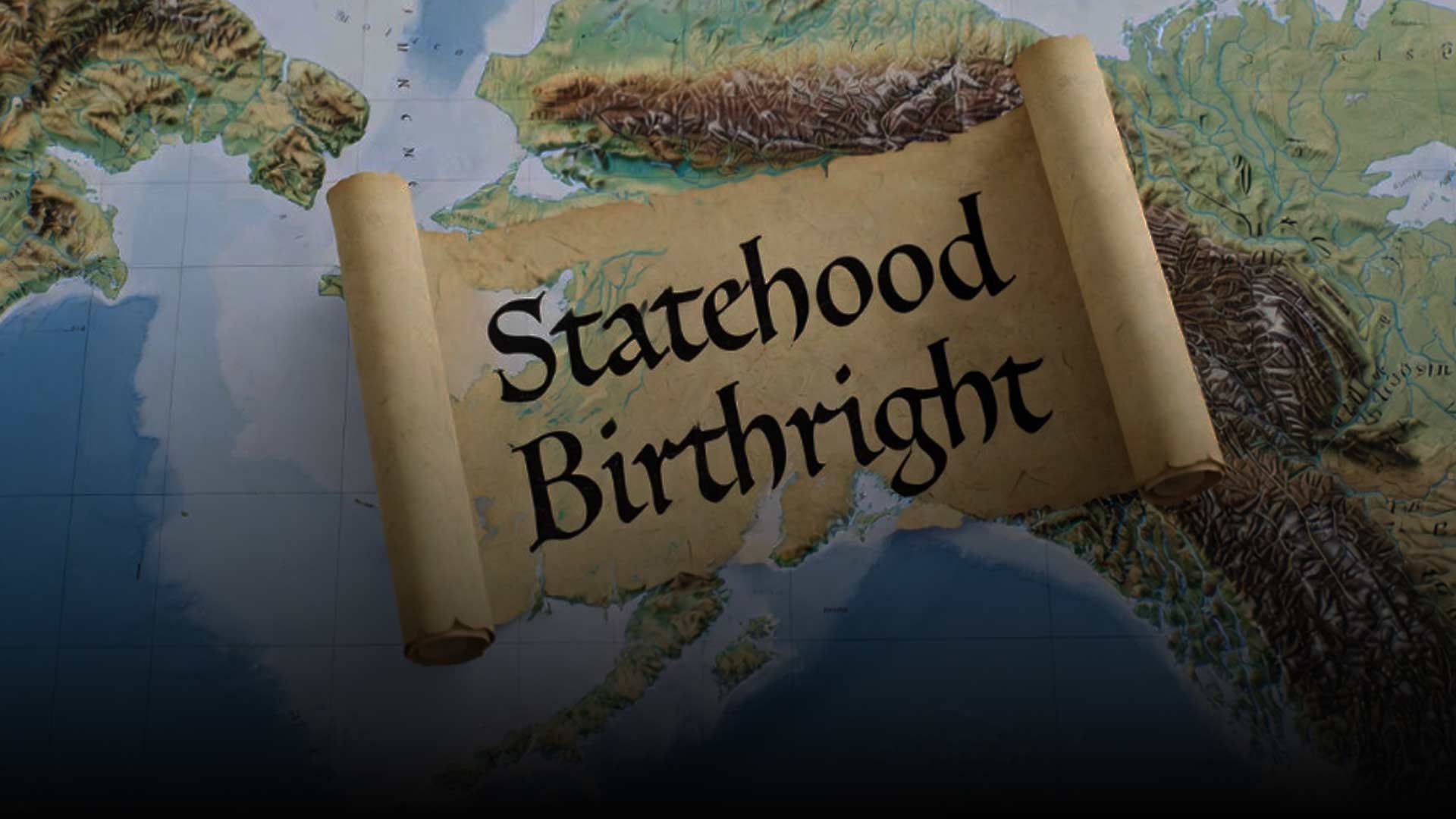
Leading up to the recent municipal election, one of the topics of discussion in our home was how the hospital bond proposal would raise our property taxes. We realized we didn’t have a good grasp on what we paid in taxes in Homer compared to the rest of the state, so I investigated the situation. What I found was surprising, and others might also find this information of interest.
I called the finance department for a representative sampling of Alaskan cities to determine what their residents pay in taxes on their homes. That information is summarized in Table 1.

Regarding property taxes, Alaska’s two biggest cities, Fairbanks and Anchorage, pay the most – and Soldotna the least. I was relieved to find that Homer’s residents pay below-average property taxes.
My wife and I used to live in Anchorage, and one reason we left was the high property tax rate there. The information in this chart confirmed our decision to leave Anchorage and move to Homer. The mill rate for property taxes in Homer is almost half of what we paid in Anchorage. Although this information was encouraging, property taxes are only half the story of how residents are taxed.
Municipalities in Alaska derive revenue from two primary sources: property taxes and sales taxes. The rates of these taxes vary significantly from town to town. Anchorage has no sales tax, but residents there have chosen to pay for city government with high property taxes. To understand the total tax burden on residents, some way is needed to measure the total tax burden on the residents in a community.
Unfortunately, sales and property taxes are very different forms of taxation. Combining the two numbers to measure the total taxes paid by residents in a community is difficult.
Property taxes are expressed in the millage rate, the tax owed per $100,000 in property value for your home. For example, if you own a home worth $100,000 in Homer and the property tax rate is 10.26 mills, you would have a property tax bill of $100,000 x 10.26 mills = $1026. In this example,
10.26 mills = 1.026% = 0.01026
The millage rate can be confusing. If you express it as a percent tax and try to add the property and sales tax rates together, you end up with a number that doesn’t really measure the total tax burden.
To better understand the total tax burden on the average Alaskan, I developed a ratio called the “Combined Tax Factor.” The CTF ratio is the property millage rate in mills added to the sales tax rate expressed as a percentage. This ratio has no intrinsic meaning but can be used to evaluate the total tax burden on the residents of a typical Alaskan city against their peers. That data can be seen in Table 2.

Looking at the right-hand column in Table 2, we can better understand the tax burden the average Alaskan faces. The data shows that the town of Homer isn’t below average in total taxes paid. Homer residents pay close to the highest total taxation rate in the state and are only about 1% below the highest-taxed city in Alaska, Kodiak. Anchorage and Fairbanks still have a high Combined Tax Factor, but Homer is right up there with them.
After seeing this chart, it is easy to understand why the taxpayers voted against the recent hospital bond proposal here. Homer residents are already highly taxed and don’t want any additional new ones.
The defeated bond proposal should help inform the new mayor of Homer. New taxation in Homer will be very unpopular with the voters. Another concern for the mayor-elect is that if new taxes are imposed on the citizens, current residents of Homer could move elsewhere to find a more tax-friendly place to live.
If city leadership keeps jacking up tax rates, the city might face the prospect of a declining population, with residents moving to more tax-friendly cities. If they don’t think this is possible, a great case study is the city of Detroit. It was a thriving manufacturing center in 1950 and had a population of 1.8 million people. Today, only about 600,000 people live there and the city government struggles to pay for city services. The same thing could happen to our town.
You can see from this analysis that Soldotna pays the lowest combined tax rate in the state and is just up the road from Homer. Proponents of any new taxation in Homer ought to worry about losing residents to Soldotna. The move there would be an easy one.
The views expressed here are those of Greg Sarber. Read more Sarber posts at his Seward’s Folly substack.








19 Comments
Thanks Greg! I’m all for taxing corporations.
Taxing corporations is a tax passed onto the consumer. I’m glad you are pro corporate taxing. SMH.
When corporations are taxed, do you really think they will take the loss? Not a chance! They increase the price of their services and it is the consumer who pays those taxes.
Think our government who is collecting the tax is going to use that money properly? $33,000,000,000,000 in deficit says otherwise.
Pushing more and more taxes only creates more strain on the lower class.
Please don’t vote. Just stay at home.
See this is the issue.. Instead of raising prices and passing the cost on to consumers, the corporations could just take it out of their profits.
It appears that small businesses stuck fighting with the common man for the crumbs because they have to pay so much in taxes, while major corpos could take most of that burden and just make $90 million instead of $100 million.
“……..I’m all for taxing corporations………”
Including “non-profit” corporations?
This was a fantastic article. Worth sharing for sure. Thank you Greg.
The driver of high taxes begins & ends with the “wants vs. needs” population within the tax boundary. I live in Anchorage and, for example – we have broken down plows, parts delayed, not enough drivers to operate them. But every April it seems there’s a Proposition for Parks & Rec. Which the voters routinely pass. Anchorage has 107 parks on the books, some large & some small. Do we need 107 parks? Do we need to expensively or extensively upgrade parks? In my opinion, no.
Econ 101, Professor Don “Guns or butter in a flailing economy?” The recent “struggles” between the Liberal assembly and a Conservative mayor (over the homeless situation) is a good example of guns or butter. Anchorage taxpayers now are on the hook for $30,000,000 for hotels, meals & other support for 7 months for the indigent recidivist homeless. Is this an equitable use of taxpayers money? The charitable orgs Beans Cafe, Brother Francis, Catholic Social Services, et al used to provide 2 hots and a cot for the homeless. As it should be, they are tax exempt, and charitable. Now, out of the ether, the new administration is proposing a 3% sales tax in Anchorage. The fluffhead non-accountants will pass it on the next ballot. In light of wants vs. needs, I suspect we too will be moving to less taxation, and soon.
“……..Anchorage taxpayers now are on the hook for $30,000,000 for hotels…….”
I’m certainly not surprised. Didn’t you notice the boom in hotel building during the Rick Mystrom period? Rick headed the Anchorage Winter Olympics committee which lost to Albertville in 1986. The international Olympics committee really wanted Anchorage to win, but cited the near complete lack of venues and even hotel space for the events and crowds. Later, after Mystrom won the mayors office, guess what happened? Voila! It was like magic! Both state oil money and native corporation money went into both venue building and………hotels. But hotels get pretty empty in the Anchorage winter. How do you pay for that (other than absolutely obscene rates between Memorial Day and Labor Day)?
You’re finding the answer out the hard (expensive) way……….
Greg, thanks for the write-up. I would add the Juneau Legislative de-facto tax on every resident that is eligible for a Permanent Fund Dividend since June 29, 2016. Former governor Walker started the great PFD raid by vetoing (6/29/16) the full statutory divident due to eligible residents. The Juneau legislators have gone along with it ever since as their own private piggy bank and tried to use the percent of market value (5.25% or 5% as of FY22) to justify giving less than the full amount due to residents.
Income available for [Permanent Fund] distribution equals 21 percent of the net income of the [Permanent] fund for the last five fiscal years, including the fiscal year just ended, but may not exceed net income of the fund for the fiscal year just ended plus the balance in the earnings reserve account described in AS 37.13.145.
Alaska Statutes 37.13.145 (b) At the end of each fiscal year, the corporation shall transfer from the earnings reserve account to the dividend fund established under AS43.23.045, 50 percent of the income available for distribution under AS37.13.140. NOTE: This distribution is not based on the price of Alaska crude oil, despite the mindset in Juneau, but the earnings of the Permanent Fund. Just one person’s opinion.
Thanks, it’s good to see a comparison for thoughts only! This makes you think. It also shows if Anchorage it’s in a sales tax or income tax Anchorage residents will move to the top of the chart.
Any town with mandatory utility hookups should include the utility prices in these figures. I.E. if water/sewer is mandated (no well/septic allowed), then those are just flat taxed or meter taxed and those rates become fixed tax prices that should be subject to this calculation.
Well laid out and clear explained. Excellent article, thank you!
Anchorage has a higher overall tax rate because we maintain more Municipal services such as Parks that taxpayers want than other locations. I have been here 42 years, IMO most Alaskans choose their domicile for reasons other than taxes
Maintain….? Did a great job this week in “maintaining” the roads. /s
You mean all those parks that have become havens for the drug addled and homeless? Those parks?
Few people realize that substantial taxes are paid in the form of inventory tax and business personal property tax. What is not understood is that many businesses do not pay an inventory tax because of loopholes. Car dealerships do not pay on the value of their vehicles because a vehicle has a very small tax when it is sold. There is an exclusion so businesses like restaurants do not pay except on their personal property such as fixtures. The biggest entity doing business here that traditionally did not pay tax is Amazon because they did not have a location here. Now that they have a location they should be paying some tax but it it is probably very little.
A former Municipal manager once told me that many businesses have never paid because they have never filed and the cities position was not to try to find those that did not. A former Assembly member used to give me the CD that divulged all the numbers but he has since passed so I do not get the numbers anymore. It is truly unbelievable how many large retail businesses paid very little in tax even though they were much larger than others.
I wrote an ordinance that would have closed a lot of loopholes and fix the inequities but could not get the Assembly to take it up. Some assembly people liked the current system because their business had no inventory. Others just did not care. One Assembly Women lambasted me from the Dias for trying to infringe on their turf.
I finally gave up because it was a losing battle.
The charts are missing the hidden tax of about 50% of each PFD disbursed since Bill Walker was in office. YET politicians talk that the state is going broke and we’ll need a state income tax. Naaa.. Politicians need to be held accountable and decide what social programs are needed.
Why can we not ask to see their accounting? How much are they holding in past tax years? Why are they taxing more for park upgrades when the homeless have taken possession? What improvements are you noticing in Anchorage or your town /city? Forward this article to your City Mayors and begin to ask the questions.
Thanks for sending this. I was a property owner in Soldotna for many years. Good choice.
I am surprised that Homer is higher than Juneau.